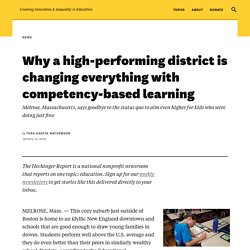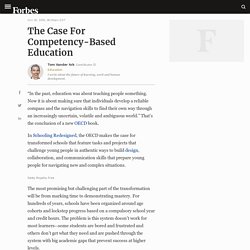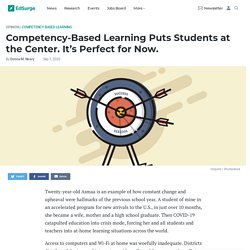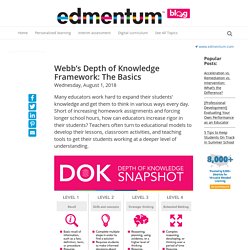

REMINDER. Task and Project Quality Checklist. WhatisCBE. Backwards Design Basics – CTE Resources. Drawing from the framework of backwards design (Wiggins & McTighe, 2005), this page outlines pedagogical tools and resources to help and guide you as you prepare to teach your course.

Backwards design is a process for course development that focuses first on identifying student learning goals and scaffolding assessments and teaching methods around these goals to help students master these activities. Designing “with the end in mind” begins not with instruction and curriculum first, but rather views these activities as a means to helping students learn.
This process is guided by three overarching questions: The following article describes course design in response to these three questions. Learning Objectives – CTE Resources. Start With The End In Mind To start with the end in mind means to start with a clear understanding of where you hope your students will end up.

Once you know the destination, it is easier to figure out “How will I know if my students got there?” And “What I can do to help them get there?”. Drawing from the backward design framework (Wiggins & McTighe, 2005), the first step in the course design process is to determine the purposes and goals of the course. Most instructors do this informally; that is, they have in mind the skills, knowledge, and attitudes they want students to gain by the end of the term. 40 Useful Competency-Based Education Publications and Resources. Editor’s Note: This post is an appendix to a recently released report on competency-based education entitled Show What You Know: The Landscape of Competency-Based Education.

We’ve been looking into what schools, districts, networks, and impact organizations are doing to accelerate progress toward an effective CBE system, and in July we will release a full publication highlighting our research and analysis. In the meantime, we have assembled a series of initial lists of positive examples in various areas. The resources highlighted below contain valuable, thought-provoking ideas that are helpful in understanding what competency-based education is, how to communicate about it, and how to plan for it.
This list is not intended to be comprehensive, but is a sampling of resources identified as exemplars by people we’ve interviewed and/or other sources we’ve encountered in our research. A high-performing district embraces competency-based education. MELROSE, Mass. — This cozy suburb just outside of Boston is home to an idyllic New England downtown and schools that are good enough to draw young families in droves.

Students perform well above the U.S. average and they do even better than their peers in similarly wealthy school districts, according to the Educational Opportunity Project at Stanford University. At no point in recent memory has Melrose Public Schools been failing. But the outgoing superintendent, Cyndy Taymore, is four years into an effort to fundamentally rethink traditional schooling here. The reform model is known by several different names, including proficiency-based education. The Case For Competency-Based Education. “In the past, education was about teaching people something.

Now it is about making sure that individuals develop a reliable compass and the navigation skills to find their own way through an increasingly uncertain, volatile and ambiguous world.” That’s the conclusion of a new OECD book. Competency-Based Learning Puts Students at the Center. It’s Perfect for Now. Twenty-year-old Asmaa is an example of how constant change and upheaval were hallmarks of the previous school year.

A student of mine in an accelerated program for new arrivals to the U.S., in just over 10 months, she became a wife, mother and a high school graduate. Then COVID-19 catapulted education into crisis mode, forcing her and all students and teachers into at-home learning situations across the world. Access to computers and Wi-Fi at home was woefully inadequate. Districts distributed devices and internet providers allowed free connections. Graduation Must Depend on Learning, Not Time (Opinion) Bloom's Digital Taxonomy. CAST: About Universal Design for Learning. Instructional Strategies - Triple E Framework. Introduction to the SAMR Model. SAMR and Bloom's Taxonomy: Assembling the Puzzle.
For teachers just starting out with educational technology, the task at hand can sometimes seem daunting.

Even though tools such as the SAMR model can help, the plethora of choices available can prove paralyzing, frequently resulting in ongoing substitutive uses of the technology that block, rather than enable, more ambitious transformative goals. The approach below is designed to help overcome this barrier, and is inspired in its form by Alexander’s notion of Design Patterns -- a clearly structured solution to a recurring design problem -- which has been applied to education scenarios by Bergin et al. While it is not laid out exactly as a design pattern would be, it nonetheless provides a framework that a teacher could use in similar fashion. Blog.edmentum. Many educators work hard to expand their students’ knowledge and get them to think in various ways every day.

Short of increasing homework assignments and forcing longer school hours, how can educators increase rigor in their students? Teachers often turn to educational models to develop their lessons, classroom activities, and teaching tools to get their students working at a deeper level of understanding. Norman Webb’s Depth of Knowledge (DOK) framework is a highly regarded model that has been proven to be useful in understanding what type of knowledge is required to solve problems in academia. Webb has outlined different levels of content complexity and understanding. Let’s take a look at an example, the DOK summary definitions for mathematics, which follow: Churches 2008 DigitalBloomsTaxonomyGuide. Crosswalk. MarzanoTaxonomy. Revised Blooms Taxonomy Action Verbs.
Webbs DOK Guide. PDF Download of the Critical Concepts. MathTeacherMastery. The Critical Concepts. The Critical Concepts Research indicates that most standards documents articulate far more content than can be taught in the time available to K–12 teachers.

In response, analysts at Marzano Resources sought to identify, as objectively as possible, a focused set of critical concepts for each K–12 grade level in the content areas of English language arts (ELA), mathematics, and science. Our process for identifying and articulating critical concepts involved eight phases, which are described in the report The Critical Concepts (Final Version: English Language Arts, Mathematics, and Science).
The descriptions of phases 1 through 5 explain how we identified measurement topics in the areas of ELA, mathematics, and science (these measurement topics are listed in appendices A, B, and C of the report). The descriptions of phases 6, 7, and 8 explain how we created proficiency scales, or learning progressions, for each of the measurement topics. Criticalconcepts. Let’s Just Say It Out Loud: There Isn’t Enough Time To Cover All the Standards - Aurora Institute. Let’s take a trip back in time, before the pandemic.

It’s September 29th in an 11th-grade English class in one of America’s biggest cities. For the past 12 days, the students have been working on an in-depth analysis of a Victorian poet’s dramatic monologue about a 16th-century Spanish duke. Unpacking Standards Leads to Confidence, Not Chaos, for Teachers and Students. With all of the published materials and frameworks available, teachers often ask why they should invest their time in unpacking standards. Consider the following: Teachers who do the work to unpack standards are the ones who understand them. It is through collaborative conversations that we come to collective clarity on what we want our students to know and be able to do. When teachers unpack standards in isolation they are likely to interpret the intent and rigor differently resulting in an educational lottery for students rather than a guaranteed and viable curriculum.Understanding all of the standards helps teachers wisely choose the essential or power standards.